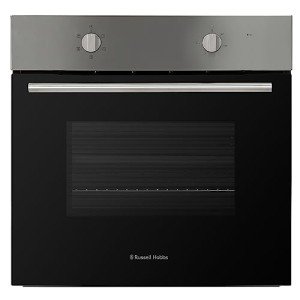Fitted Ovens and Hobs: An In-Depth Guide to Modern Cooking Appliances
Fitted ovens and hobs have actually ended up being a staple in contemporary kitchen areas, combining functionality, visual appeals, and ingenious innovation. These kitchen appliances are designed to perfectly integrate into kitchen surfaces, supplying the culinary enthusiast with the tools needed for effective meal preparation while preserving a streamlined and organized appearance. In this post, we will explore the various kinds of fitted ovens and hobs, their advantages, elements to think about when selecting them, and responses to often asked questions.
Comprehending Fitted Ovens and Hobs
Fitted ovens and hobs are appliances specifically developed to be built into kitchen cabinetry or countertops for a smooth appearance. They can vary considerably in design, size, performance, and features, which deal with varied cooking needs and kitchen styles.
Kinds Of Fitted Ovens
- Built-in Ovens: These ovens are set up straight into a wall or kitchen unit and can be found in different setups and sizes.
- Double Ovens: A built-in version that includes two separate oven compartments, enabling for numerous meals to be cooked at differing temperature levels at the same time.
- Combination Ovens: These flexible appliances integrate conventional baking with microwave innovation.
- Steam Ovens: Ovens that use steam for cooking, keeping wetness in food while improving flavors and nutrients.
- Single Ovens: A standard oven unit that is the most common type utilized in homes.
Kinds of Hobs
- Gas Hobs: These utilize burner for cooking, providing instant heat and precise temperature level control.
- Electric Hobs: Powered by electrical power, these hobs typically feature smooth surfaces that make them simple to tidy.
- Induction Hobs: Utilizing electro-magnetic energy, induction hobs heat pots and pans directly rather than the hob surface area, making them energy effective and a safe choice.
- Blended Hobs: These use both gas and electric choices, offering flexibility for cooking styles.
Advantages of Fitted Ovens and Hobs
Fitted ovens and hobs use various benefits that enhance the cooking experience:
- Space Efficiency: Designed to fit into cabinetry, fitted appliances use up less space compared to standalone models, producing a streamlined kitchen layout.
- Looks: Fitted models typically develop a more cohesive and aesthetically enticing kitchen style.
- Personalization: Homeowners can choose from a range of styles, surfaces, and features to match their kitchen design and cooking needs.
- Boosted Functionality: Many modern-day fitted ovens and hobs boast sophisticated innovation, such as wise controls, self-cleaning features, and exact temperature settings, which simplify cooking.
- Security Features: Many hobs, especially induction designs, have safety features such as auto shut-off and kid locks, promoting a much safer cooking environment.
Factors to Consider When Choosing Fitted Ovens and Hobs
When choosing fitted appliances for a kitchen, numerous factors should be considered to ensure the right option:
- Cooking Style: Different appliances deal with different cooking practices. Home cooks should assess their normal meal preparation techniques to find appropriate appliances.
- Area and Layout: Measure the available space in the kitchen to guarantee that the chosen appliances fit neatly without hindering movement.
- Energy Efficiency: Choose appliances with energy-efficient rankings to decrease energy expenses and ecological impact.
- Technology and Features: Consider the wanted features, such as clever innovation, self-cleaning modes, or specific cooking functions like steam or convection cooking.
- Budget plan: Determine a budget before making selections to guarantee that the picked designs line up with financial preparation.
Table: Comparison of Different Types of Ovens and Hobs
| Home appliance Type | Pros | Cons |
|---|---|---|
| Built-in Ovens | Space-saving, personalized design | Setup cost can be high |
| Double Ovens | Prepare multiple dishes at various temps | Takes up more area |
| Steam Ovens | Healthy cooking, retains nutrients | Generally higher cost |
| Gas Hobs | Quick heat control, chosen by chefs | Needs a gas line installation |
| Induction Hobs | Fast cooking, energy-efficient, safe | Requires compatible pots and pans |
| Electric Hobs | Easy to clean, stable cooking temperatures | Heating times can be slower |
Often Asked Questions (FAQs)
1. What is the distinction in between a built-in oven and a freestanding oven?
A built-in oven is integrated into kitchen cabinets for a smooth look, while a freestanding oven stands alone and is frequently more visible and accessible.
2. Are induction hobs safe to utilize?
Yes, induction hobs are thought about safe as they just generate heat when suitable pots and pans is placed on them, lowering the danger of burns.
3. Can I set up a fitted oven myself?
While some people might choose to install fitted ovens themselves, it is normally suggested to employ a professional to guarantee right installation and adherence to safety requirements.
4. What size of oven is perfect for a little kitchen?
In small kitchen areas, consider compact or single built-in ovens that fit within the readily available space without jeopardizing on cooking performance.
5. Do fitted ovens and hobs need unique upkeep?
Fitted appliances require basic maintenance, such as cleaning and periodic checks. However, built in gas oven and hob depend upon the kind of oven or hob.
In conclusion, fitted ovens and hobs represent the embodiment of modern kitchen style and performance. By understanding their types, benefits, and considerations, consumers can make informed choices that enhance their cooking experiences while fitting effortlessly into their home. Whether producing gourmet meals or preparing family dinners, fitted ovens and hobs are valuable tools in any cooking space.

